

East Berlin
German Democratic Republic
1990
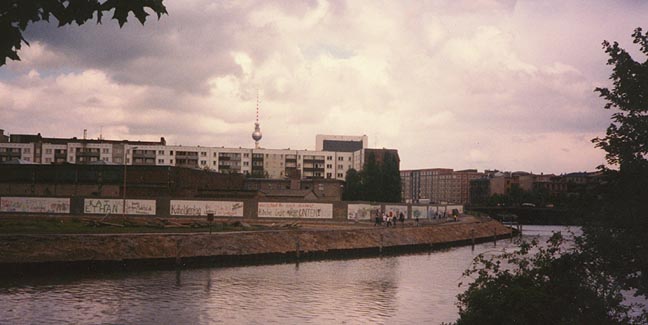
remaining portion of the Berlin wall
Berlin Wall
, fortified wall surrounding West Berlin, built in 1961 and maintained by the former German Democratic Republic (GDR), commonly known as East Germany, until 1989. The Berlin Wall was a highly visible symbol of the Cold War, the post-1945 struggle between the Union of Soviet Socialist Republics (USSR) and its allies, including East Germany, and the United States and its allies.
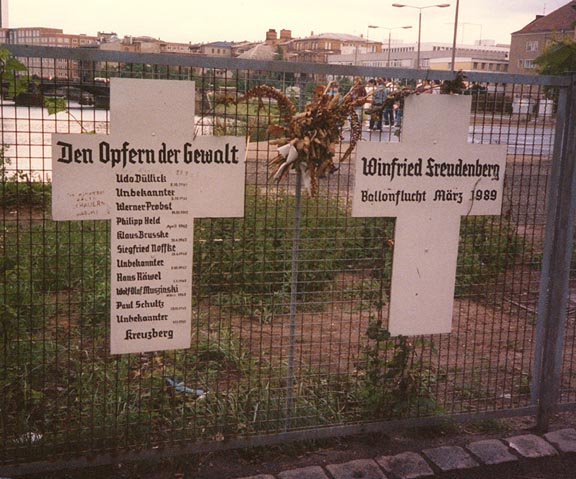
memorial to those killed trying to leave East Germany
At the end of World War II in 1945, the city of Berlin was completely surrounded by territory occupied by Soviet forces. This territory officially became the country of East Germany in 1949. The city of Berlin itself was partitioned into East Berlin and West Berlin. West Berlin was occupied by British, French, and United States forces and was supported by the Federal Republic of Germany, commonly known as West Germany. Between 1949 when East Germany was established and the middle of 1961, at least 2.7 million people fled East Germany, more than half of them through West Berlin. Compared to other countries in Eastern Europe, East Germany was the most productive Communist nation between 1949 and 1961. However, East Germans had limited access to West German media and were aware that their standard of living was substantially lower than that of their counterparts in West Germany. Many East Germans left the GDR hoping to find better economic opportunities in the West.
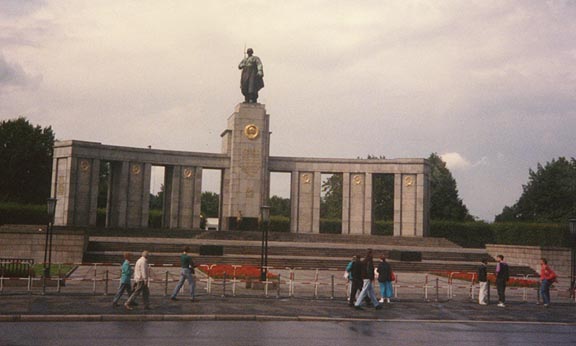
monument to the liberating
Soviet Red Army
(just across the border in West Berlin)
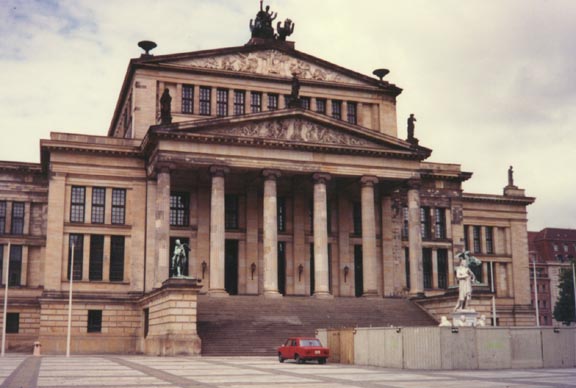
The only openings in the wall were two closely guarded crossing points. Although the GDR announced that the wall was needed to prevent military aggression and political interference from West Germany, the East German government built tank traps and ditches along the eastern side of the wall, suggesting that it was constructed to keep East German citizens in.

Berlin Cathedral
Between 1961 and 1989, a few East Germans managed to escape to West Berlin, but at least 80 people died trying to cross the border. In the summer of 1989, the Berlin Wall became irrelevant when Hungary allowed East Germans to pass through Hungary on their way to Austria and West Germany.
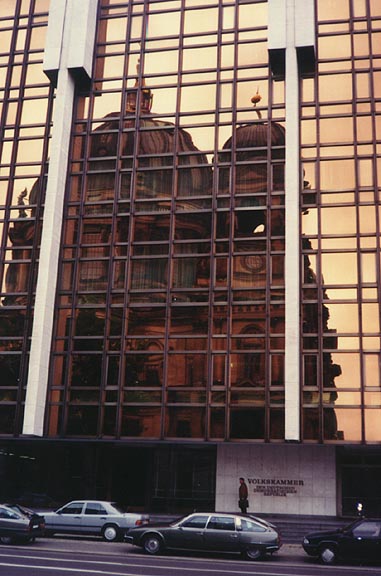
Berlin cathedral as reflected in the windows of The Volkskammer, the DDR parliament
In the fall of that year, the East German regime was on the verge of collapse, and on November 9, enthusiastic private citizens began to demolish whole sections of the wall without interference from government officials. East Germany eventually participated in the removal of the Berlin Wall and reunited with West Germany in 1990 as one nation, the Federal Republic of Germany. The Berlin Wall is now commemorated by a few remaining sections and by a museum and shop near the site of the most famous crossing point, Checkpoint Charlie.
Text from Microsoft Encarta
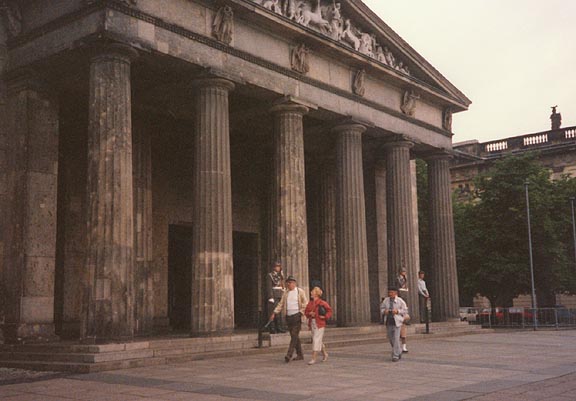
Neue Wache 1816-18
(designed by Friedrich Shinkel as a monument to fallen war soldiers)
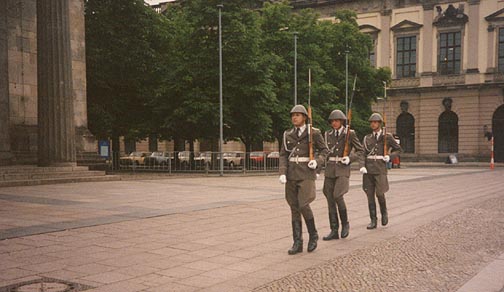
changing of the guard
(the East German government made it a monument to victims of the Nazi period)

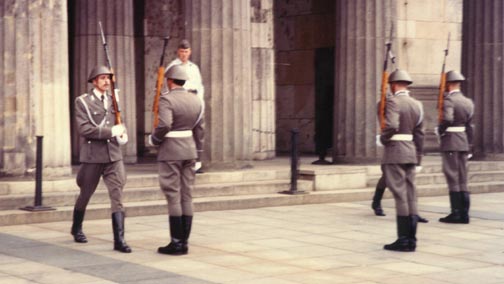
replacing those guarding the shrine
![]()
![]()